

Take the Journey of a Single Thought to…
Empowerment - Enlightenment - Excellence
A Time to Quiet your Mind
A Place to Heal your Body
A Pathway to Renew your Spirit
A Mentor to Guide your Soul
A Philosophy to Transform your Life
Our Services are in Baltimore, Maryland and Surrounding Areas in Maryland
Mentor Coaching • Hypnosis • Mindfulness • Meditation • Training
MIND SPA MENTOR
MIND SPA WELLNESS
10806 Reisterstown Road, Suite 2A
Owings Mills, Maryland 21117
Patricia M. Armour: 410 - 356 - 3377
patricia@mindspamentor.com

Since the beginning of time, mothers have sung soothing lullabies while rocking babies in their arms. This repetitious melody and continuous motion are both calming and hypnotic.
The power of suggestion has motivated mankind since the beginning of recorded time.
Ancient people the world over have used the hypnotic practices of drumming, dancing, and chanting to induce an
altered state of mind for the purpose of healing, uncovering memories, and spiritual revelation, performed by tribal shamans, witch doctors, and medicine men and women, based on the belief that the mind can heal the body.
Over 4,000 years ago, the founder of Chinese medicine, Wang Tai, used words to accomplish healing.
Over 3,000 years ago, Egyptian physicians practiced healing methods using words and touch.
In ancient Egypt and Greece, and during the Roman Empire, as early as 1000 BC, sleep temples were places that priests introduced the procedure and practice of suggestion – sleep – cure, the belief that the mind can heal the body.
In 350 BC, Hypocrites, known as the Father of Modern Medicine, concluded that “all feelings and emotions originate in the brain and are the source of any disease of the body.”
Success of these temples and belief in the practice of suggestion later spread through Europe. This led to modified therapeutic versions of hypnosis, reflecting he culture of the time. During the first century, England was first to include the practice of laying on of hands along with healing hymns and chants written by the Church of England. This was referred to as suggestion-healing; today it is called mind/body healing.

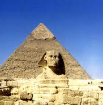
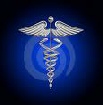

During the 1700’s, Viennese physician, Franz Anton Mesmer, developed the process of prolonged eye fixation to balance the animal magnetism, improved health in his patients, referred to as mesmerism.
In the 1800’s, English physician, James Braid, who studied Mesmer’s work and the practice of suggestibility, introduced the
term “neuro-hypnosis” meaning nervous sleep, later coined the term “Hypnosis” as a new science for the very first time. James Esdaile, a Scottish surgeon, applied suggestion as hypnotic anesthesia in British East India to patients during surgery.
Indian culture acknowledges the concept of higher self, meditation, and other altered states of consciousness. Portuguese priest, Jose Custodia de Faria, referred to hypnosis as lucid sleep, determined that the better your concentration, the more easily you are hypnotized.
In the late 1800’s, French doctor Jean-Martin Charcot, discovered that some neurological symptoms were psychologically caused from unwanted memories.
Progress and development of modern hypnotherapy gained medical interest and acceptance through research in suggestibility and pain control by an American psychologist, Clark Hull, following World War II, when it was discovered that hypnotherapy was especially helpful in treating soldiers with battle fatigue, injury, shock, and what is now called (PTSD), “post-traumatic stress disorder.“
French doctors Libeault and Bernheim, from the famous Nancy Medical School, introduced calming words and soft voice for hypnotic trance. They also emphasized the importance of the doctor/patient relationship and introduced the use of pscho-therapeutics and hypnosis together. Today, psychological life coaching skills and hypnosis techniques are integrated together as a modern therapeutic approach and self-help template implemented in a variety of formats, such as “Goal Imagery™” and “HypnoCoaching™” and “Mentor Hypnosis.™”
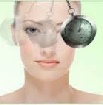
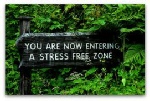
Philosopher and psychologist, Carl Jung, studied the phenomena of altered states of consciousness and developed the theory of the “collective unconscious”, which is referred to today as “super-conscious thoughts.”
In the late 1800’s, French psychiatrist, Sigmund Freud, introduced the concept of the unconscious mind and developed free association techniques and the use of imagination as a variation of suggestion therapy in psychoanalysis. During this time, it was discovered that suggestions, when given in relaxed trance, remained during the waking state of consciousness. Today, this is called “post-hypnotic suggestion.”
In the early 1900’s, French pharmacist, Emile Coue, discovered the power of auto-suggestion, or waking suggestion, introducing the concept of “Self-Hypnosis.”
His famous auto-suggestion formula is “Everyday in every way, I am getting better and better.”
Today, the practice of self-hypnosis and the power of suggestion through the use of positive psychology, with life-enhancing statements or suggestions are referred to as “Affirmations.”
Dr. Milton H. Erickson, the Father of Hypnosis, introduced the concept of reprogramming the mind through suggestion therapy for effective change in both attitude and behavior, or called “mind/body communication.” This latest hypnotic technique is now referred to as (NLP), Neuro-Linguistic Programming or Neuro-Linguistic Psychology, the ability to reprogram the mind for personal achievement like programming a computer for updating information and performance.
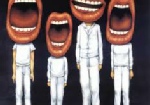

The concept of hypnosis was introduced to America during the American Revolution. In the 1930’s, stage hypnotists entertained audiences with fun, comedic demonstrations, which distorted the view of the therapeutic benefit of hypnosis.
In the 1950’s however, hypnosis was endorsed and recognized as a healing modaility by the American Medical Association (AMA), and the American Psychological Association (APA), and the British Medical Association (BMA), and the French Medical Academy and the Catholic Church.
Today, Hypnosis and Hypnotherapy is recognized as a profession of standing in the business archives of the United States. As defined by the U.S. Dept. Of Labor, D.O.T. 079.157.010: “Hypnotherapist – Induces hypnotic state in client to increase motivation or alter behavior pattern through hypnosis. Consults with client to determine the nature of problem. Prepares client to enter hypnotic states by explaining how hypnosis works and what client will experience. Tests subject to determine degrees of physical and emotional suggestibility. Induces hypnotic state in client using individualized methods and techniques of hypnosis based on interpretation of test results and analysis of client's problem. May train client in self-hypnosis conditioning.”
The National Institutes of Health (NIH) opened an Office of Alternative Medicine (OAM), which currently oversees and funds research since 1992 for alternative therapies including guided imagery, hypnotherapy,and continues to work with hypnotists and hypnotherapists throughout the United States of America. Scientific research in hypnotism is being conducted in teaching hospitals nationwide to document the medical usefulness of hypnosis.
Clinical studies and professional training is currently conducted in leading colleges across the United States including Harvard School of Medicine, Stanford, Columbia College of Physicians and Surgeons, Seton Hall School of Medicine, Johns Hopkins School of Continuing Studies, and New York University.
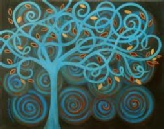

Modern methods and applications have made hypnosis a trusted and useful science. All the techniques mentioned throughout the history of hypnotism are used in present-day hypnosis. It is now highly recognized as an important tool in the healing arts, social sciences, psychology and human services, the performing arts, and sports performance.
Hypnosis is used by the Armed Forces, law enforcement agencies, major corporations, professional sports teams, the Olympic athletes all over the world, and educational institutions, hospitals and health care centers throughout the entire world.
There is an abundant resource of articles and information on hypnosis in The Journal of Hypnotism, and Hypnosis Today by the National Guild of Hypnotists, and on the internet with a multitude of global websites.
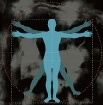
World Hypnotism Day, January 4th, was established to help educate the general public of the truth and benefits the timeless and natural process of hypnotism has to offer anyone.
Since it’s conception in 2005, hypnotism professionals in 22 countries have participated in supporting World Hypnotism Day, bringing the power of hypnosis to the world.
This is where professional hypnotists and hypnotherapists have the opportunity to share their thoughts, ideas and experiences for the world to see, and combine their efforts presenting events in their area to promote hypnotism and help the general public become more aware of hypnosis and the benefits it offers any individual desiring personal change, and end the struggle of will power and use the beneficial process of hypnosis to achieve positive changes and to reach personal goals.

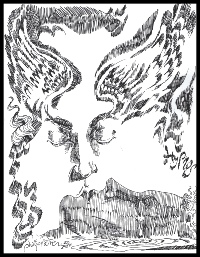
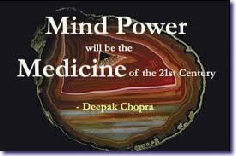

THE HISTORY OF HYPNOSIS
Hypnosis is…
The Original - Natural Mind/Body Medicine
Hypnosis and…
Lucid Sleep and Hypnotic Anesthesia
Hypnosis and…
Memory, Trauma, Stress and Pain Control
Hypnosis and Self-Hypnosis…
Post Hypnotic Suggestion, Self-Affirmation
Hypnosis Today and Tomorrow…
Self-Help, Self-Health, Sports Performance
Hypnosis is…
A Global Phenomena
Hypnosis is the Future…
World Hypnotism Day
Hundreds of Thousands of People…
Take Advantage of the Benefits of Hypnosis!
CALL TODAY 410 - 356 - 3377
Yesterday • Today • Tomorrow
Contact Us:
For more information or
to schedule an appointment
Patricia M. Armour at 410-356-3377 Email: patricia@mindspamentor.com

Mind Spa Wellness
10806 Reisterstown Road, Suite 2A
Owings Mills, Maryland 21117
Mind Spa Wellness © 2015 All rights reserved.
For Local Clients: Our office is located in Baltimore, Maryland and Surrounding Areas in Maryland:
We are in Owings Mills, Baltimore County, and We are near Baltimore City, Mt. Washington, Pikesville, Randallstown, Reisterstown, Westminster, Glen Burnie, Catonsville, Ellicott City, Columbia, Towson, Timonium, Cockeysville, Hunt Valley, Parkville, White Marsh, Jessup, Silver Spring, Bethesda, Rockville, Frederick, Annapolis, and Washington, D.C.,
We are near Howard County, Carroll County, Harford County, Anne Arundel County, Montgomery County
| Mind Spa System |
| Mind Spa Philosophy |
| Your Success Formula |
| Five Great Powers |
| Your Happiness Profile |
| Treasure Chest |
| Evolve |
| The Lotus Garden |
| Affirmations |
| Mind Spa Cinema |
| Law of Attraction |
| Why Use a Coach |
| Mindful Choices |
| Lifestyle |
| Relationships |
| Business |
| Prosperity |
| Success |
| Stress Fitness |
| Spirituality |
| Hypno Coaching |
| Why Use Hypnosis |
| Hypnosis Quiz |
| How the Mind Works |
| Types of Hypnosis |
| Hypnosis FAQ |
| What to Expect |
| How Hypnosis Works |
| History of Hypnosis |
| Stress Quiz |
| Meditation Circle |
| Meditation CD |
| Motivation CD |
| Affirmation CD |
| Stress Fitness Certification |
| Coaching Certification |
| Hypnosis Certification |
| Training Levels |
| Mind Spa Gallery |
| Stress Relief |
| Self-Confidence |
| Career-Prosperity-Success |
| Love- Sex-Romance |
| Fears-Phobia-Panic Attacks |
| Stop Smoking |
| Weight Loss Control |
| Evolve |
| The Lotus Garden |
| Affirmations |
| Mind Spa Cinema |
| Law of Attraction |
| Lifestyles |
| Supreme Self-talk |
| Wisdom Quotes |
| Guided Imagery |
| Mind Spa System |
| Mind Spa Philosophy |
| Your Success Formula |
| Five Great Powers |
| Your Happiness Profile |
| Treasure Chest |
| Evolve |
| The Lotus Garden |
| Affirmations |
| Mind Spa Cinema |
| Law of Attraction |
| Why Use a Coach |
| Mindful Choices |
| Lifestyle |
| Relationships |
| Business |
| Prosperity |
| Success |
| Stress Fitness |
| Spirituality |
| Hypno Coaching |
| Why Use Hypnosis |
| Hypnosis Quiz |
| How the Mind Works |
| Types of Hypnosis |
| Hypnosis FAQ |
| What to Expect |
| How Hypnosis Works |
| History of Hypnosis |
| Stress Quiz |
| Meditation Circle |
| Meditation CD |
| Motivation CD |
| Affirmation CD |
| Stress Fitness Certification |
| Coaching Certification |
| Hypnosis Certification |
| Training Levels |
| Mind Spa Gallery |
| Stress Relief |
| Self-Confidence |
| Career-Prosperity-Success |
| Love- Sex-Romance |
| Fears-Phobia-Panic Attacks |
| Stop Smoking |
| Weight Loss Control |